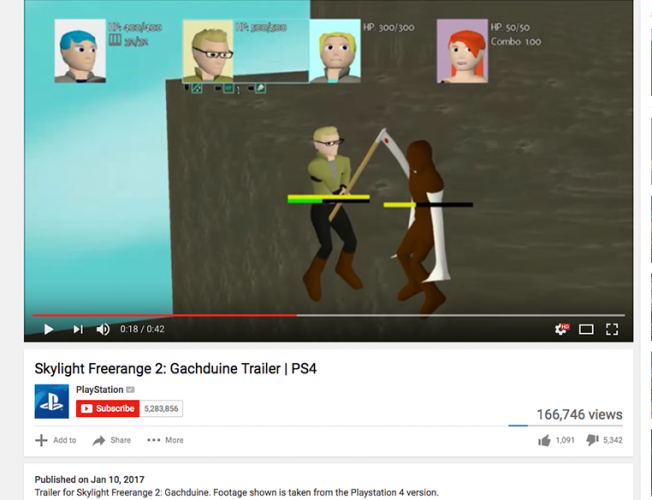Gaming
Sony promotes new video game set in N.S.
Critics are asking why the game was chosen over bigger titles

caption
The game's trailer on Sony's official Playstation channel with over 160,000 views and a majority of dislikes.
caption
The game’s trailer on Sony’s official Playstation channel with over 160,000 views and a majority of dislikes.A new video game set entirely in Nova Scotia is catching international attention, but not necessarily for the best reasons.
Released on Jan. 10, Skylight Freerange 2: Gachduine is the 5th game from one-person Canadian developer Dragoon Entertainment. Creator Daniel Bourque took some questions from The Signal about this new project by email. He has been making games from the ground up for over 10 years, handling the programming, writing and design.
What makes Gachduine notable in his career was the recent decision by Sony to promote it on their official Playstation YouTube channel. The trailer has over 160,000 views and has inspired gaming outlets to write about it. Namely, the outlets question why Sony chose to feature the game over others.
The few reviews that have come out so far have been overwhelmingly negative. The game has been called “absolutely horrifying in every way” and “an utter travesty.”
Bourque says this is “business as usual” for him.
“For the most part, anything I end up dealing with has been about the same as always,” he says.
He adds that the greater exposure has been good for him as well.
“I end up hearing more from people who are interested in Gachduine and are more positive in general.”
While he isn’t from Nova Scotia, Bourque says he has family from the region and had developed an interest in using it as his next setting. The game starts in Halifax, but players can also visit futuristic versions of places like Truro and Amherst. His previous game took place in Manitoba.
Mitchell Wells, of local development studio Hothead Games, thinks the extra exposure is good for small developers even if the reception hasn’t been all positive.
“No matter what the game looks like, a person usually creates a game with the hope of having people discover and play it,” he says in an email to The Signal. “Whether the world loves or hates it, the world is talking about it.”
He suggests Sony’s choice to promote the game was a calculated move.
“Maybe this is part of a strategy to try and get developers rethinking about what it takes to develop for Sony platforms, especially if they think it’s much easier to get featured,” says Wells.
This shift in approach by Sony is something he compares to Microsoft’s work with independent developers.
“I feel that Microsoft has had amazing success inviting indie developers to create games for their platforms,” he says. “With Sony, I feel there has been more friction for developers to get games out there.”
The idea of quality control over independent developers has been a hot topic in the gaming community recently. Widely-used computer gaming program Steam has been subject to criticism for allowing almost anything onto their storefront. These have included games that feature uncredited copyrighted content or “sample” content from game creation programs, also known as “asset flips.”
In this circle of debate, Wells says Bourque deserves credit for designing his own game instead of borrowing the work of others.
“I’m not going to say it looks good, but I’m not looking to talk down on it,” he says. “How many high quality, super polished 3D games do you know of that have been created by a sole developer?”
He says it’s impressive for a solo developer to finish a game at all.
“3D modelling and animation are usually performed by multiple people, who are specifically trained in those fields,” says Wells. “On top of that, programming the game, creating audio, 2D art, design, and so on.”
Bourque finds that working on his own gives him total control over his games.
“When I first heard about indie games development, I liked the idea of making my own games my own way, even if it meant I had to work crazy amounts of hours,” he says. “I like playing my own games, and being greedy in terms of game design. I get to put everything I want in my games.”
His next move is to port some of his previous titles over to the Playstation 4 and Vita to reach his newly expanded audience.

